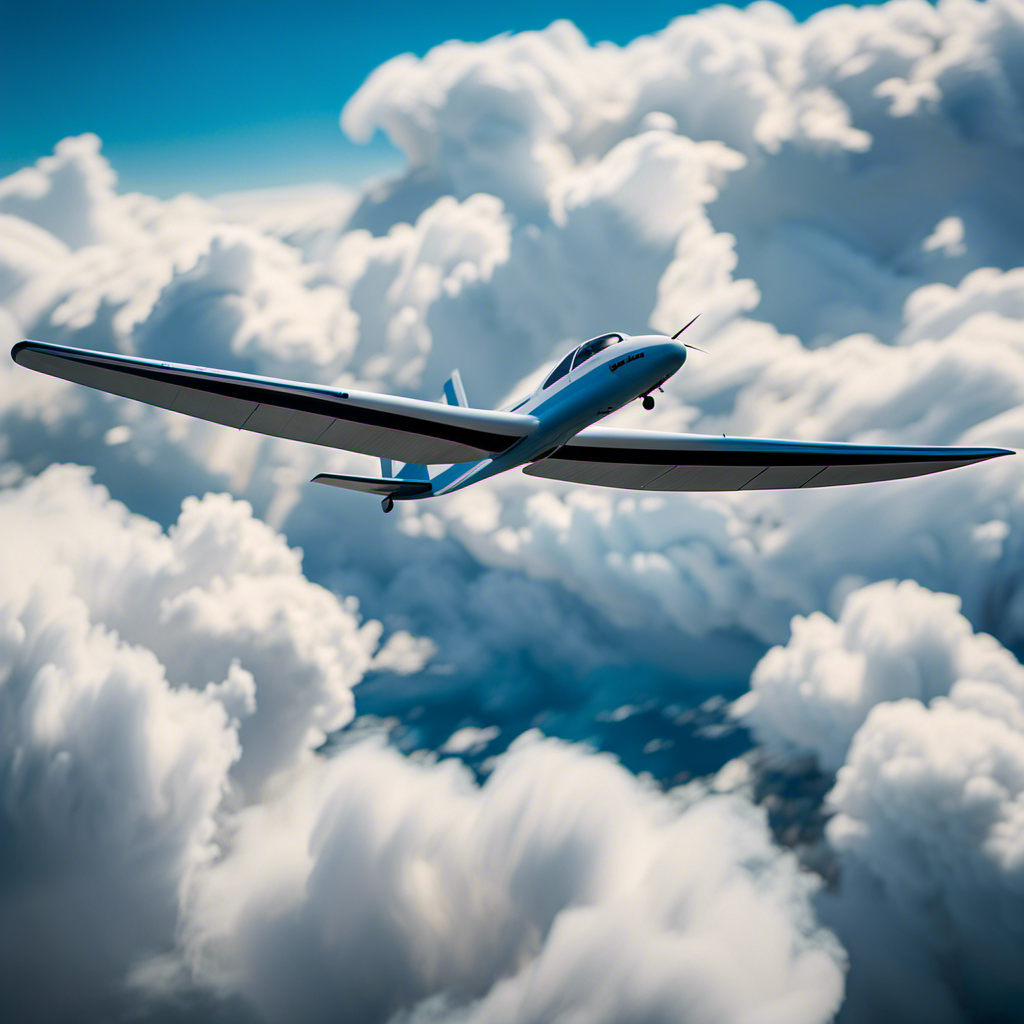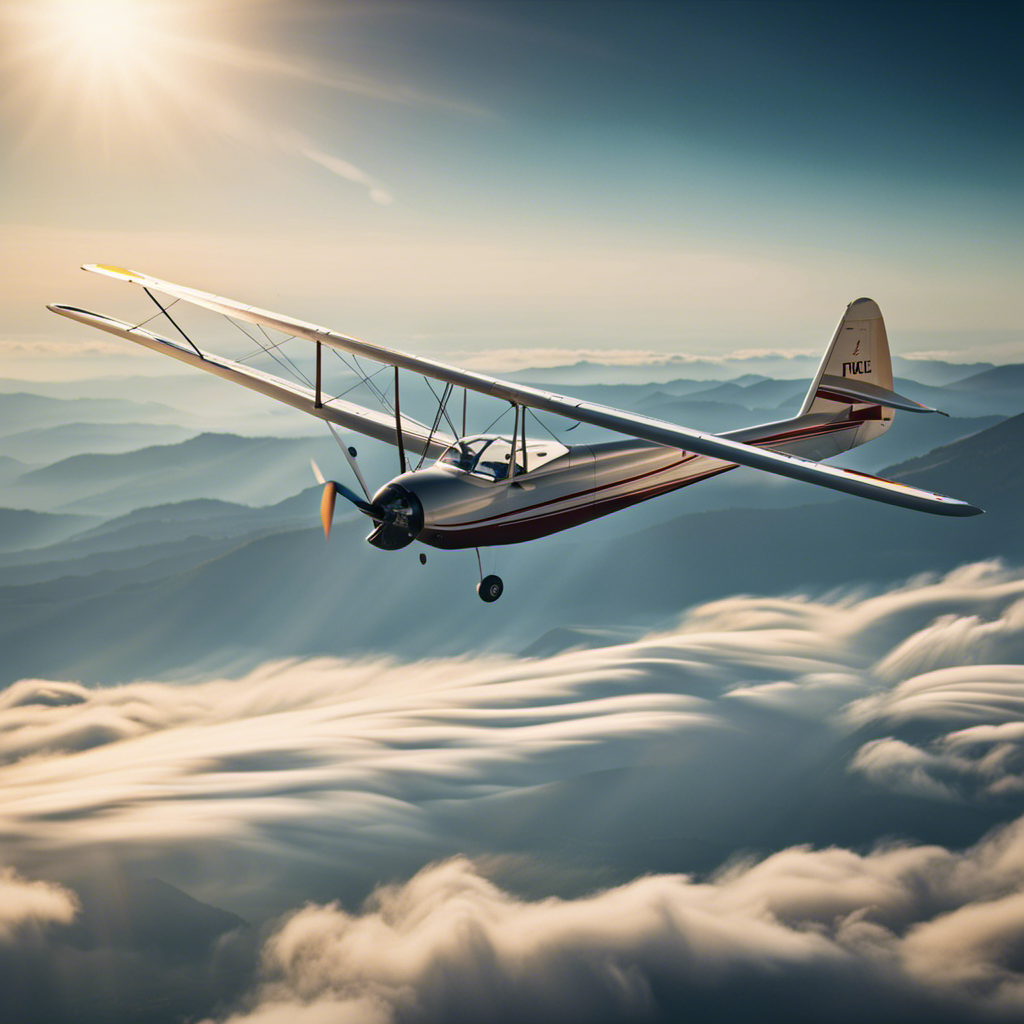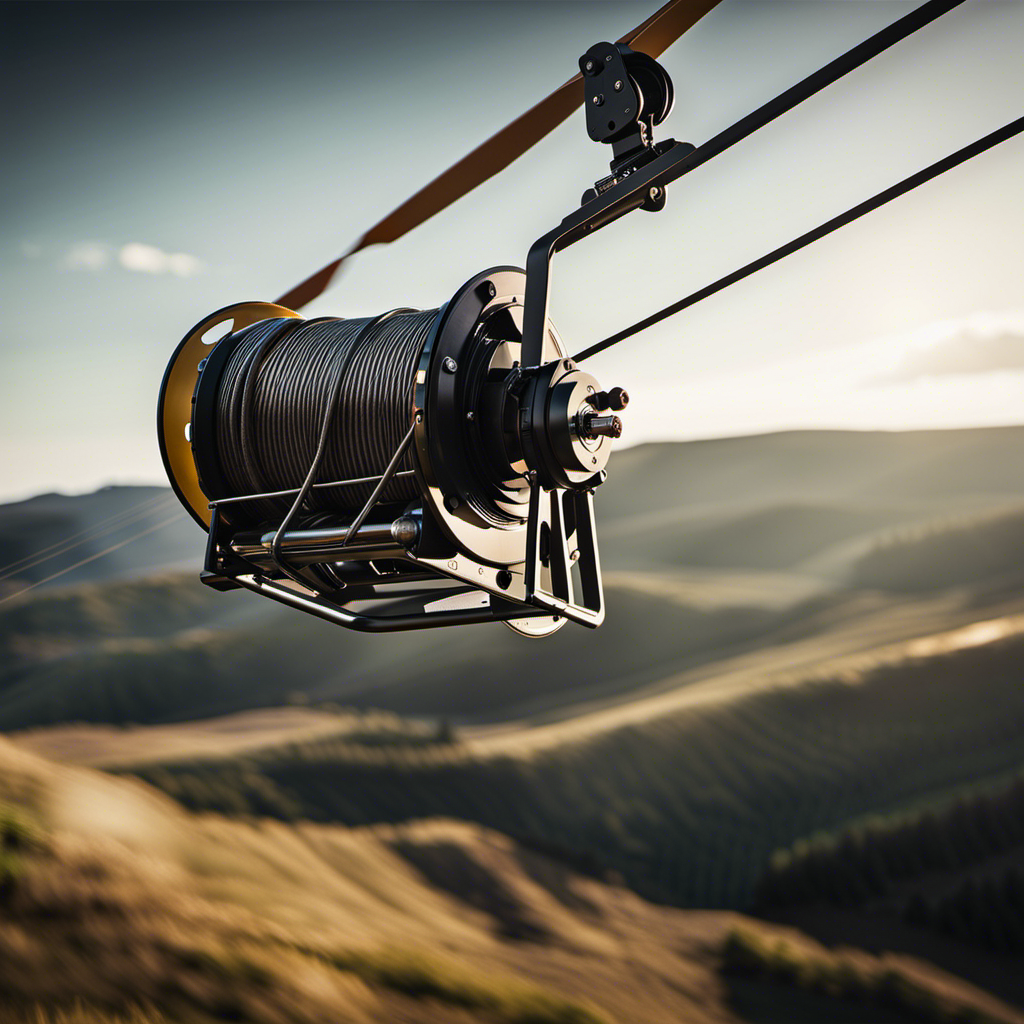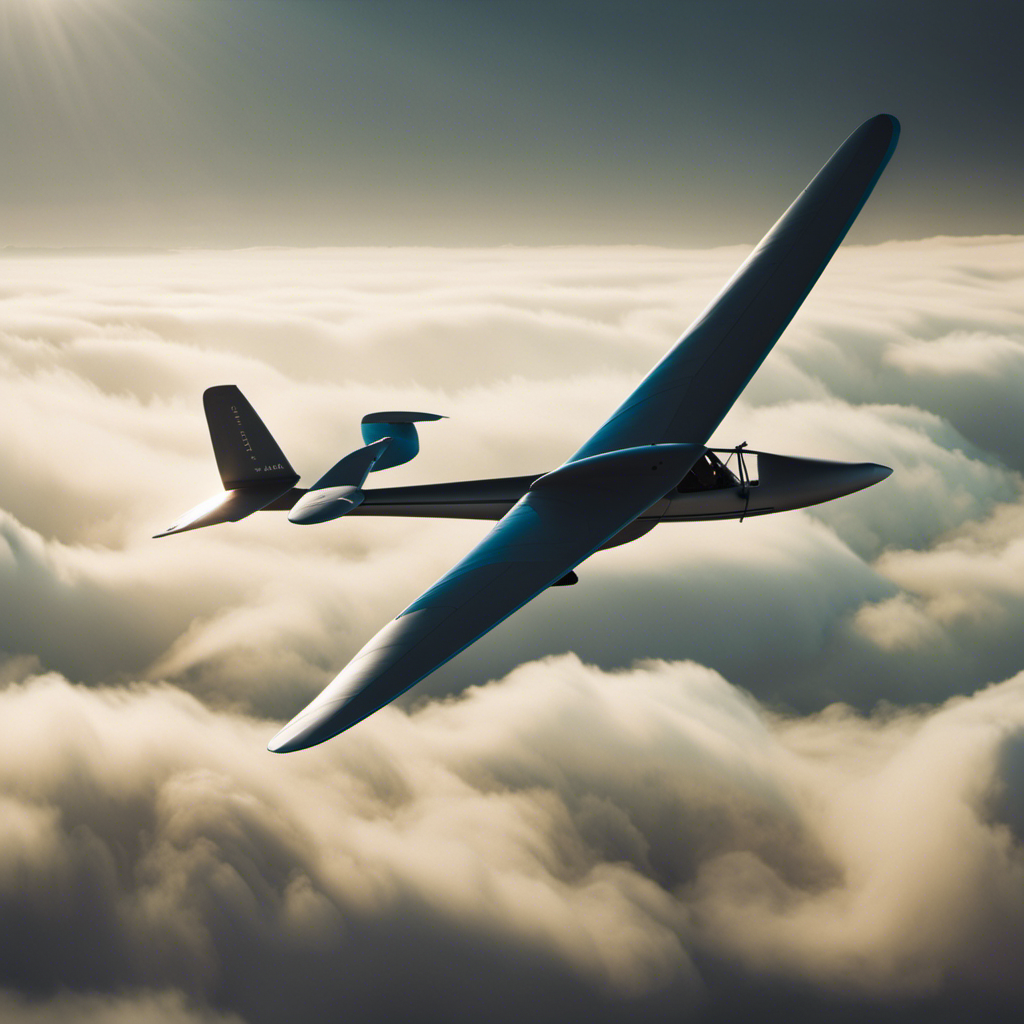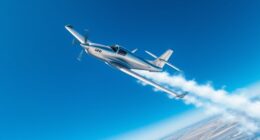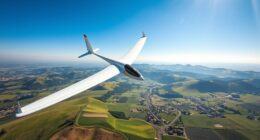Many people consider gliding to be the purest form of flying. Surprisingly, it’s not as difficult as you may think. After spending countless hours soaring through the sky in these graceful aircraft, I can confirm that with the right guidance and determination, learning to fly a glider is within reach for anyone.
In this article, we will delve into the basics of glider flight, the necessary certifications, and the skills needed to navigate the air with confidence.
So buckle up, because we’re about to take off into the world of gliding.
Key Takeaways
- Flying gliders requires continuous learning and improvement in skills.
- Joining a gliding club or community provides access to training programs, resources, and a supportive network.
- Solo flights and cross-country trips in gliders help build confidence, test abilities, and expand horizons.
- Prioritizing safety measures and being prepared for unexpected situations are crucial in glider flying.
Understanding the Basics of Glider Flight
Understanding the basics of glider flight can be challenging, but it’s definitely worth the effort.
As a glider pilot, I have gained a deep understanding of glider aerodynamics and the importance of maintaining glider equipment.
Glider flight is all about harnessing the forces of nature to stay aloft without an engine. By comprehending the principles of lift, drag, and weight distribution, pilots can maneuver their gliders effectively.
Additionally, maintaining the glider’s equipment, such as the wings, control surfaces, and instruments, is crucial for safe and efficient flight. By regularly inspecting and servicing these components, pilots ensure that their gliders are in optimal condition.
This knowledge and attention to detail are fundamental to successful glider flight.
Transitioning into the next section, obtaining the necessary training and certifications is the next step towards becoming a skilled glider pilot.
Obtaining the Necessary Training and Certifications
Getting the necessary training and certifications to fly gliders can be challenging. The certification process and training requirements are rigorous and demanding, but essential for ensuring safety and proficiency in glider flight.
Here are four key aspects of the certification process and training requirements:
-
Ground School: This involves studying aerodynamics, meteorology, regulations, and navigation to gain a comprehensive understanding of glider operations.
-
Flight Instruction: Hands-on training with certified instructors is crucial for learning glider handling, maneuvering, and emergency procedures.
-
Solo flights: Once the necessary skills are acquired, aspiring glider pilots must demonstrate their proficiency by soloing, where they fly without an instructor for the first time.
-
Written and Practical Exams: Finally, candidates must pass both written and practical exams to demonstrate their knowledge and skills in glider flight.
Mastering takeoff and landing techniques is the next crucial step in becoming a proficient glider pilot.
Mastering Takeoff and Landing Techniques
Once you’ve mastered takeoff and landing techniques, glider flying becomes much smoother and more enjoyable. Understanding the aerodynamics involved in these crucial aspects of flying is key to ensuring a safe and successful flight.
During takeoff, it is important to maintain a proper angle of attack to generate enough lift to get the glider off the ground. This requires precise control of the control surfaces, such as the elevator and ailerons, to maintain the correct pitch and roll.
Landing, on the other hand, requires a careful approach and coordination of the control surfaces to smoothly touch down on the runway. By honing these skills, you will gain confidence and proficiency in controlling the glider during these critical phases of flight.
Transitioning from takeoff and landing to navigating and controlling the glider in the air requires a different set of skills and understanding.
Navigating and Controlling the Glider in the Air
To navigate and control the glider in the air, you’ll need to maintain a steady altitude and adjust the control surfaces to stay on course.
Navigating techniques involve using visual references, such as landmarks or GPS, to determine your position and select the most efficient route. You must also consider wind direction and speed to make corrections and maintain your desired heading.
Controlling techniques include manipulating the control surfaces, such as the ailerons, elevator, and rudder, to maintain balance and maneuver the glider. By applying these techniques, you have the ability to make precise turns, climb or descend, and maintain a steady flight path.
Now, let’s delve into managing weather conditions and airspace regulations, essential aspects of glider flying that ensure both safety and efficiency.
Managing Weather Conditions and Airspace Regulations
As a pilot, you’ll need to stay informed about current weather conditions and adhere to airspace regulations to ensure a safe and efficient flight. Managing crosswinds is crucial when flying gliders. Crosswinds can affect the control and stability of the glider, making it essential to understand glider aerodynamics. By comprehending the forces at play, such as lift, drag, and weight, you can make informed decisions on how to handle crosswinds effectively.
In addition to managing crosswinds, it is vital to stay updated on weather conditions. This includes monitoring wind speeds and directions, cloud formations, and any potential storms or turbulence that may impact your flight. Adhering to airspace regulations is equally crucial to ensure the safety of yourself and other aircraft. By understanding these regulations and staying informed about weather conditions, you can navigate the skies confidently.
Developing skills in soaring and thermalling requires a solid foundation in managing weather conditions and adhering to airspace regulations.
Developing Skills in Soaring and Thermalling
Transition: Now that we have a good understanding of managing weather conditions and airspace regulations, let’s dive into the exciting world of developing skills in soaring and thermalling. This is where the true art of glider flying comes into play, as it requires a deep understanding of the aerodynamics involved in staying aloft for extended periods of time.
Here are some essential techniques and strategies for improving your soaring skills and developing thermalling proficiency:
- Mastering the art of centering thermals, which involves carefully observing the behavior of the glider and making precise control inputs to stay within the core of the thermal.
- Utilizing efficient turning techniques such as the ‘flat turn’ or ‘banked turn’ to minimize drag and maintain maximum lift during the thermal climb.
Improving your skills in these areas will not only extend your flight times, but also enhance your ability to navigate through varying thermal conditions.
Transition: With a solid foundation in soaring and thermalling techniques, it is crucial to also learn emergency procedures and safety measures in order to safely navigate any unforeseen circumstances that may arise during a glider flight.
Learning Emergency Procedures and Safety Measures
Make sure you familiarize yourself with the emergency procedures and safety measures to ensure a safe and prepared flight. When flying gliders, it is essential to have a thorough understanding of the emergency landing procedures and safety protocols. In the event of an emergency, such as an engine failure or an unexpected weather change, knowing how to react quickly and appropriately can make all the difference.
Safety procedures include conducting regular pre-flight inspections, understanding the proper use of safety equipment, and being aware of emergency landing sites within the gliding area. By adhering to these safety measures and undergoing thorough training, pilots can minimize risks and respond effectively in emergency situations.
As we develop our skills in glider flying, it is important to build experience through solo flights and cross-country trips, which will further enhance our knowledge and confidence in handling different scenarios.
Building Experience through Solo Flights and Cross-Country Trips
After learning emergency procedures and safety measures, it is time to put that knowledge into practice and gain experience through solo flights and cross-country trips. This phase of glider training is crucial for building confidence and exploring new territories in the sky. As a glider pilot, I have found that solo flights allow me to fully immerse myself in the art of flying. It is during these flights that I am able to apply the skills I have learned and truly test my abilities. Cross-country trips, on the other hand, take my flying to a whole new level. They require careful planning and navigation, allowing me to venture beyond the familiar and discover new landscapes from above. It is through these experiences that I continue to grow as a pilot and expand my horizons in the world of gliding.
| Column 1 | Column 2 | Column 3 |
|---|---|---|
| Solo flights | Building confidence | Applying learned skills |
| Cross-country trips | Exploring new territories | Planning and navigation |
| Experience | Growth | Expansion |
Joining a Gliding Club or Community for Support and Guidance
When you join a gliding club or community, you’ll find the support and guidance you need to excel in your glider training.
Joining gliding clubs provides a unique opportunity to connect with experienced glider pilots who can share their knowledge and expertise. These clubs often have training programs and resources specifically designed to help beginners learn the ropes of glider flying.
The experienced pilots can offer valuable insights, answer questions, and provide feedback on your progress.
Being part of a gliding community also allows you to build relationships with fellow enthusiasts who share your passion for flying. These connections can be invaluable as you continue your journey in gliding and strive for continuous learning and improvement in your glider flying skills.
Continuous Learning and Improvement in Glider Flying Skills
Being part of a gliding community allows you to continuously learn and improve your skills in flying gliders. It is through continuous practice and honing of skills that one can truly become a proficient glider pilot.
As an avid glider enthusiast, I can attest to the benefits of being part of a supportive community that encourages growth and development. Here are three key aspects of continuous learning and improvement in glider flying skills:
-
Regular flight training sessions with experienced instructors who provide valuable guidance and feedback.
-
Participating in gliding competitions and challenges to test your abilities and learn from other skilled pilots.
-
Engaging in theoretical studies and staying up to date with the latest advancements in gliding technology and techniques.
Frequently Asked Questions
How much does it cost to get the necessary training and certifications for glider flying?
To obtain the necessary training and certifications for glider flying, it typically costs around $2,000 to $5,000. Certification requirements include completing a specific number of flight hours, passing written exams, and demonstrating proficiency in various flight maneuvers.
What are some common weather conditions that can affect glider flight?
Weather conditions play a crucial role in glider flight. Strong winds, turbulence, thermals, and thunderstorms can pose challenges. Pilots must employ appropriate flight techniques to navigate these conditions safely and efficiently.
Are there any specific regulations or restrictions for flying gliders in certain airspace?
Yes, there are specific regulations and airspace restrictions for flying gliders. These rules ensure the safety of all aircraft in the airspace and help prevent any potential conflicts or accidents.
How long does it typically take to become proficient in soaring and thermalling?
Becoming proficient in soaring and thermalling requires a significant time commitment and a steep learning curve. It’s like mastering the delicate dance of a tightrope walker, but with the added challenge of harnessing invisible forces.
What are some common emergency procedures and safety measures that glider pilots should be aware of?
Emergency procedures are crucial in glider flying. Pilots must be aware of procedures such as releasing the tow rope in an emergency, handling stall/spin situations, and executing a safe landing in case of an engine failure. Safety measures include thorough pre-flight inspections, using appropriate safety equipment, and maintaining situational awareness throughout the flight.
Conclusion
In conclusion, flying gliders is a challenging yet rewarding endeavor that requires a deep understanding of the principles of flight and precise control of the aircraft. It takes time and dedication to obtain the necessary training and certifications, but the sense of freedom and exhilaration experienced while soaring through the sky is unmatched.
Like a bird riding the wind currents, glider pilots must constantly adapt to changing conditions and navigate through the vast airspace. It is a skill that must be continuously honed and improved upon, much like a craftsman perfecting their art.
So, if you’re ready to embark on this incredible journey, prepare to spread your wings and soar into the unknown.
